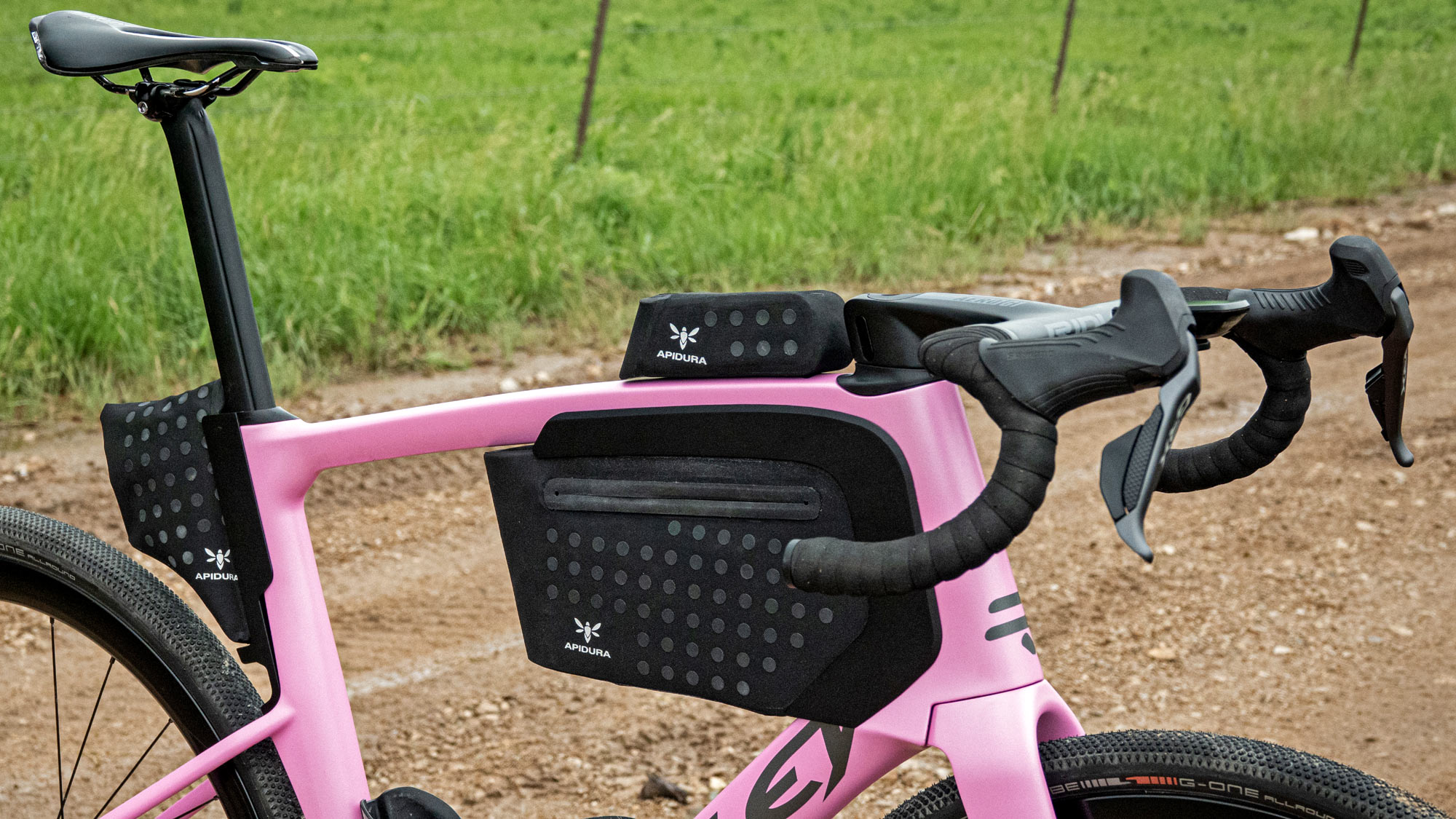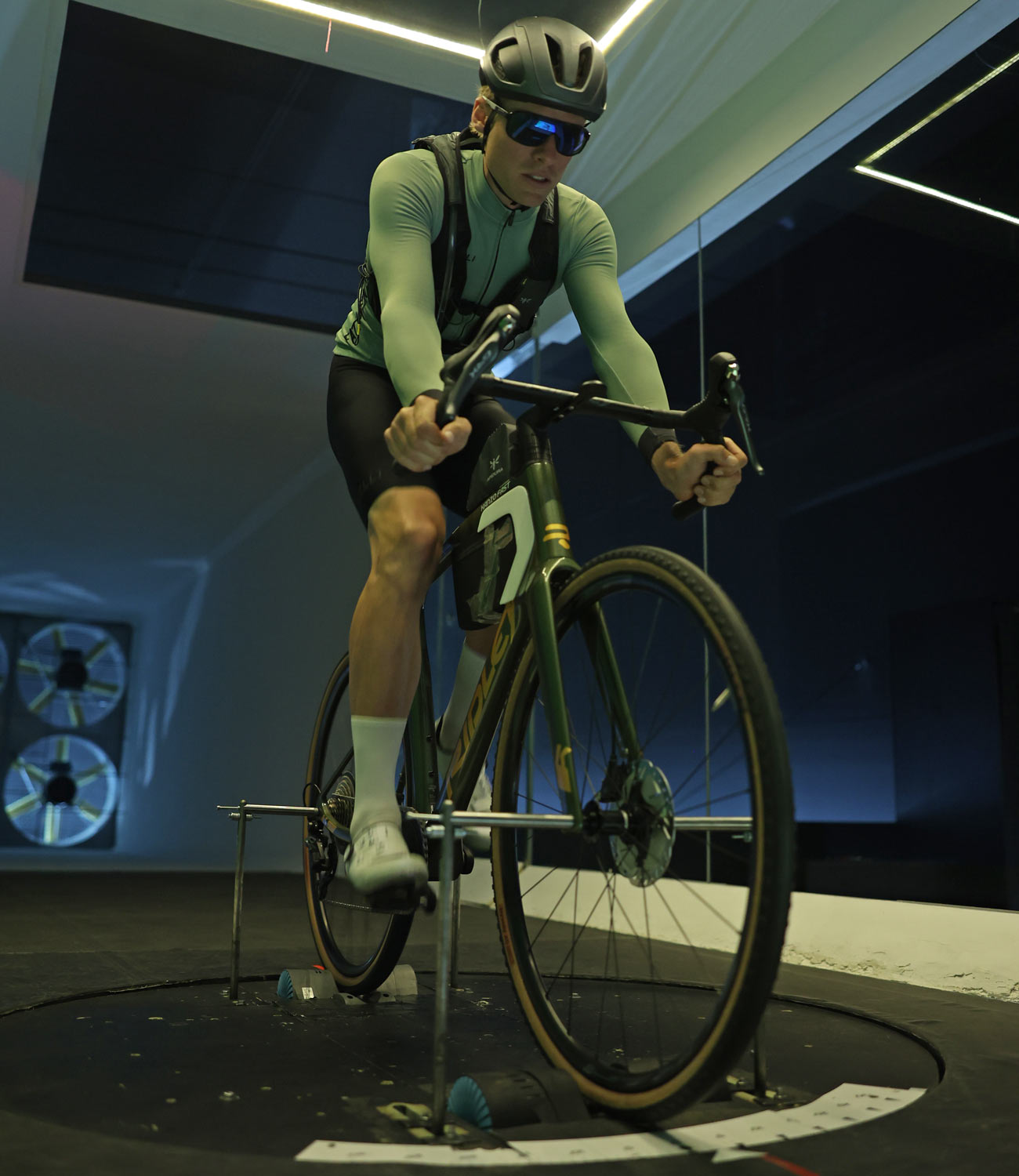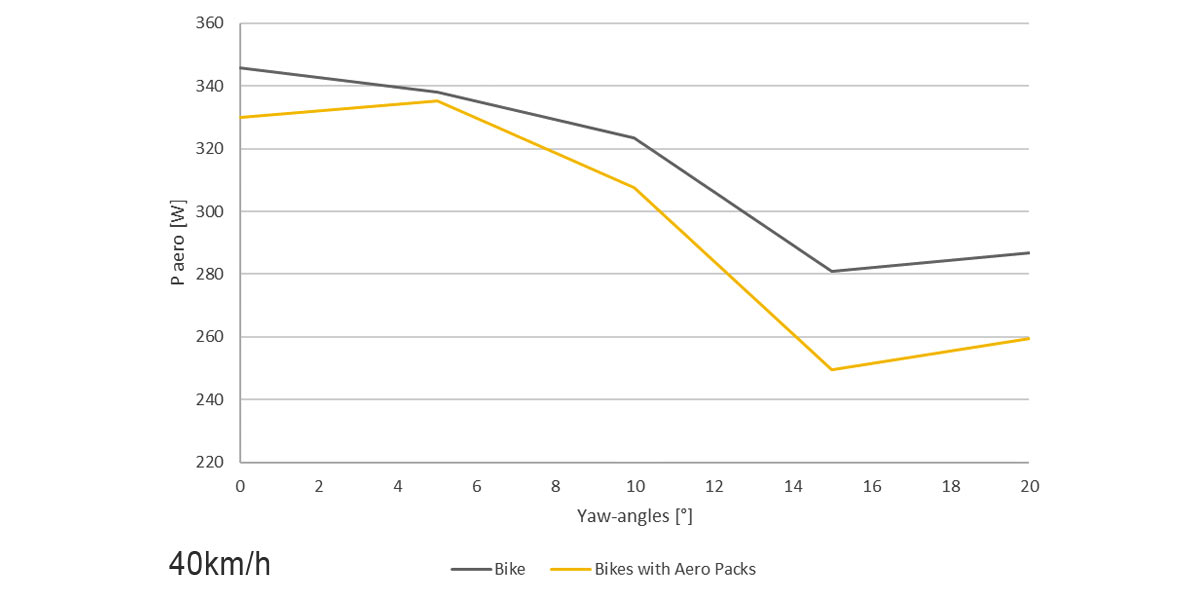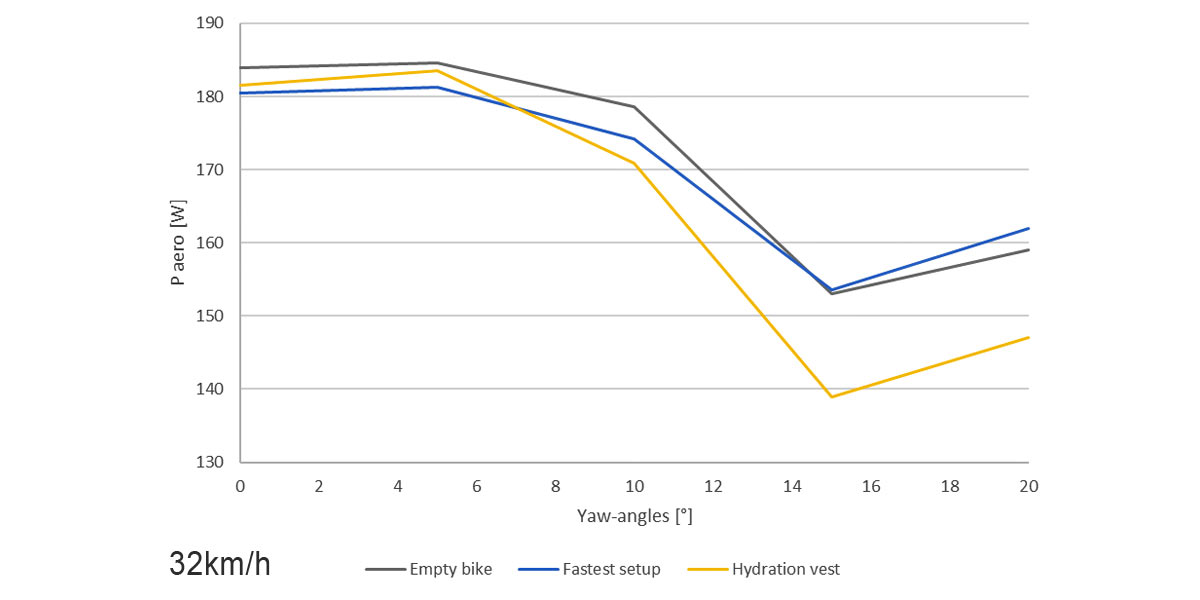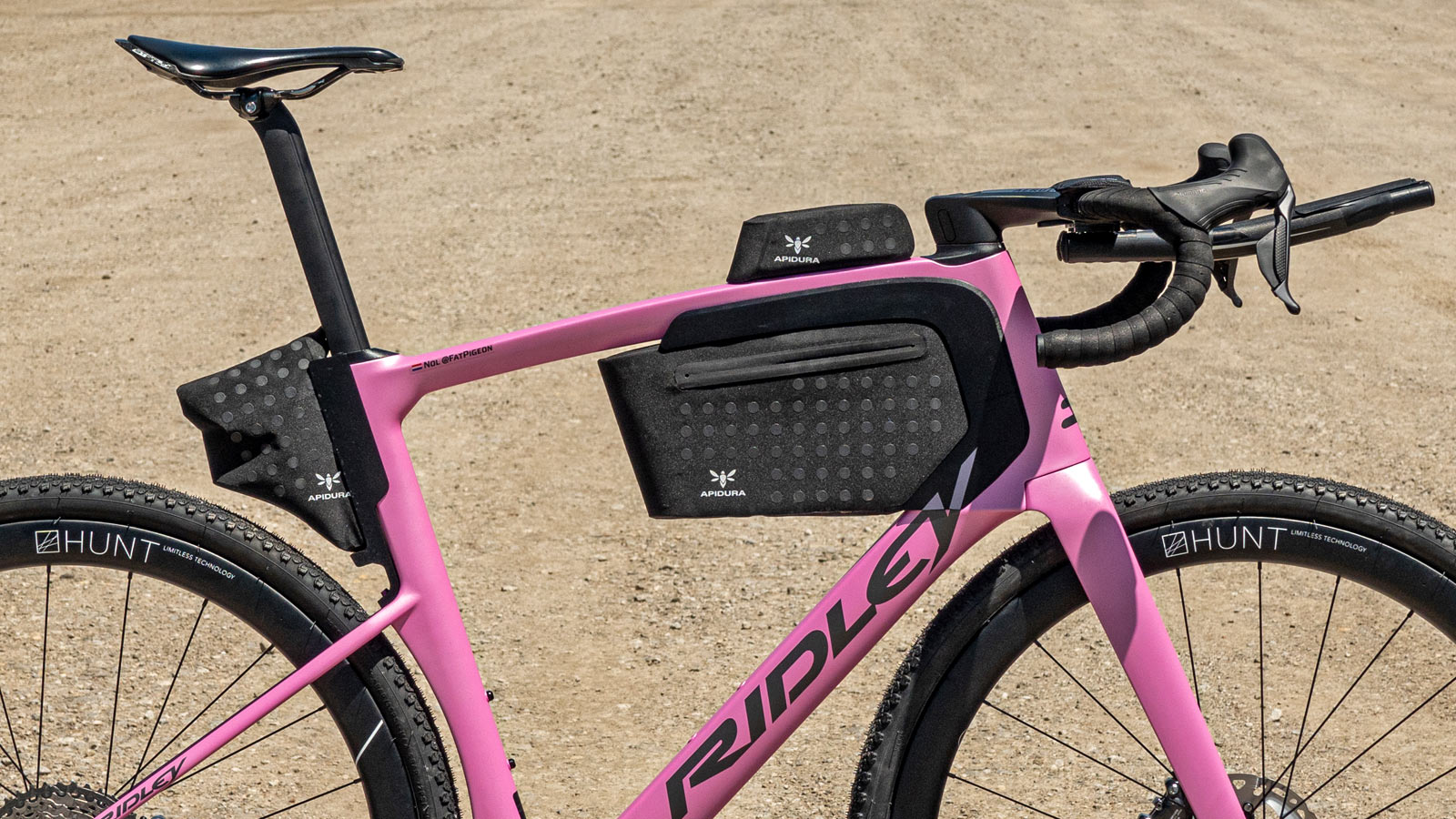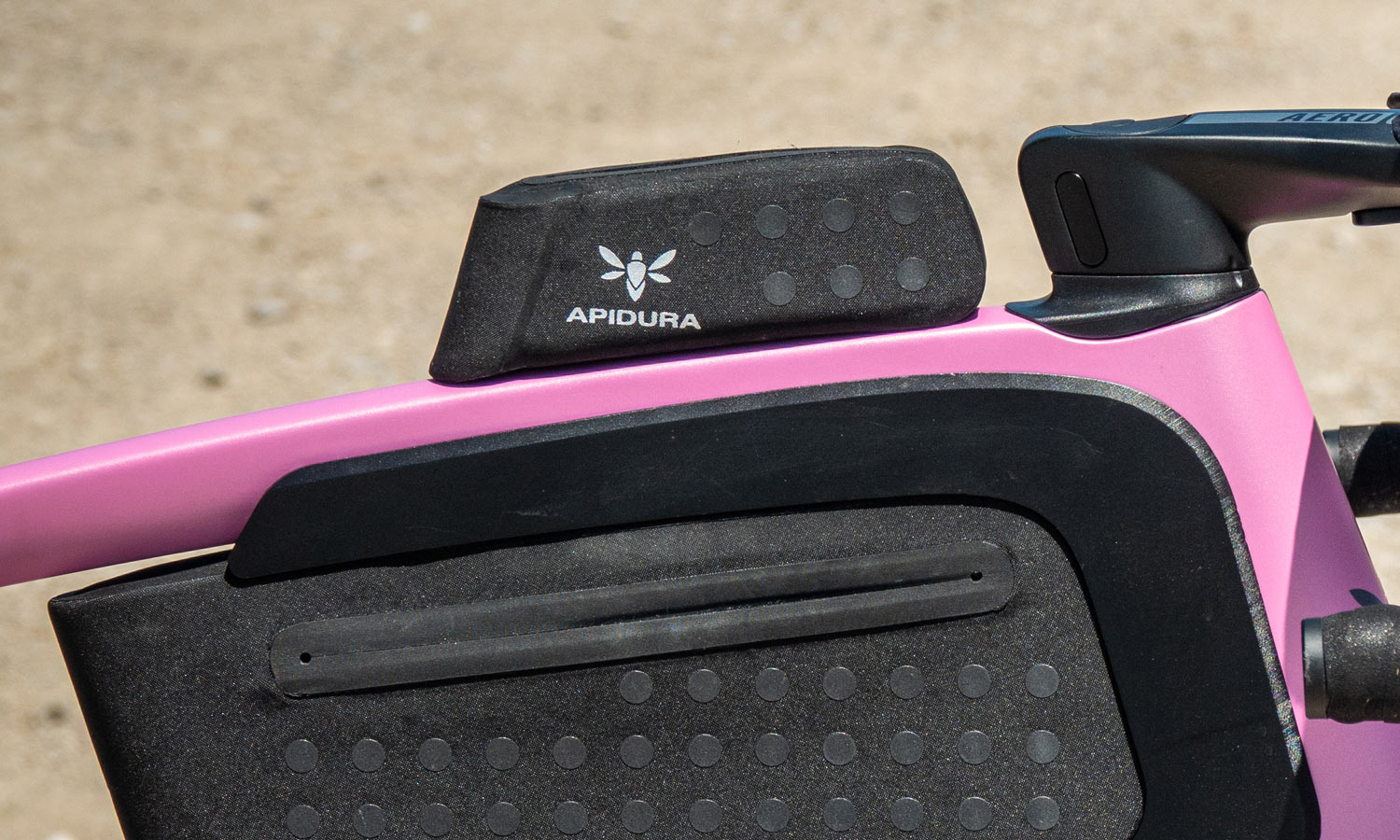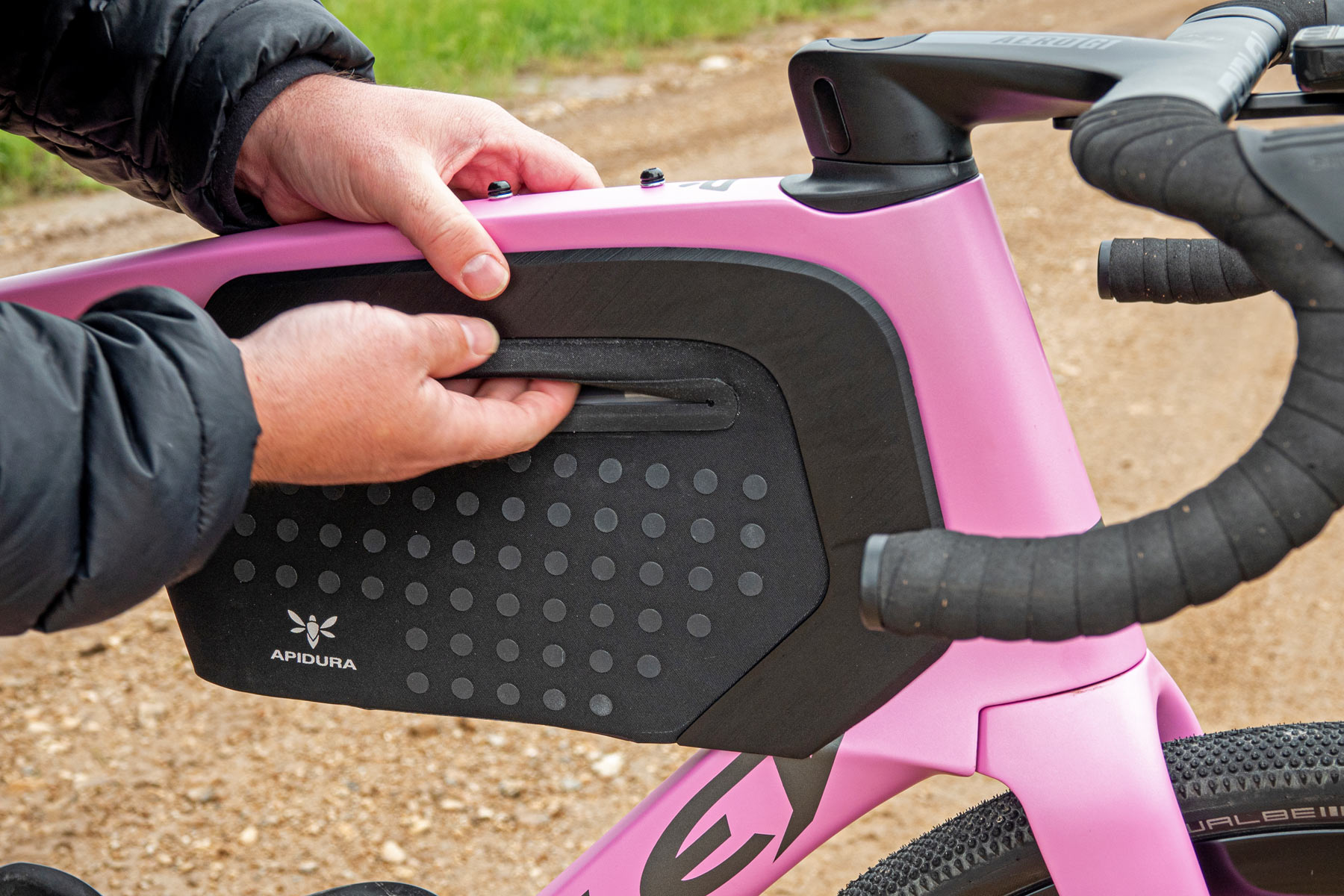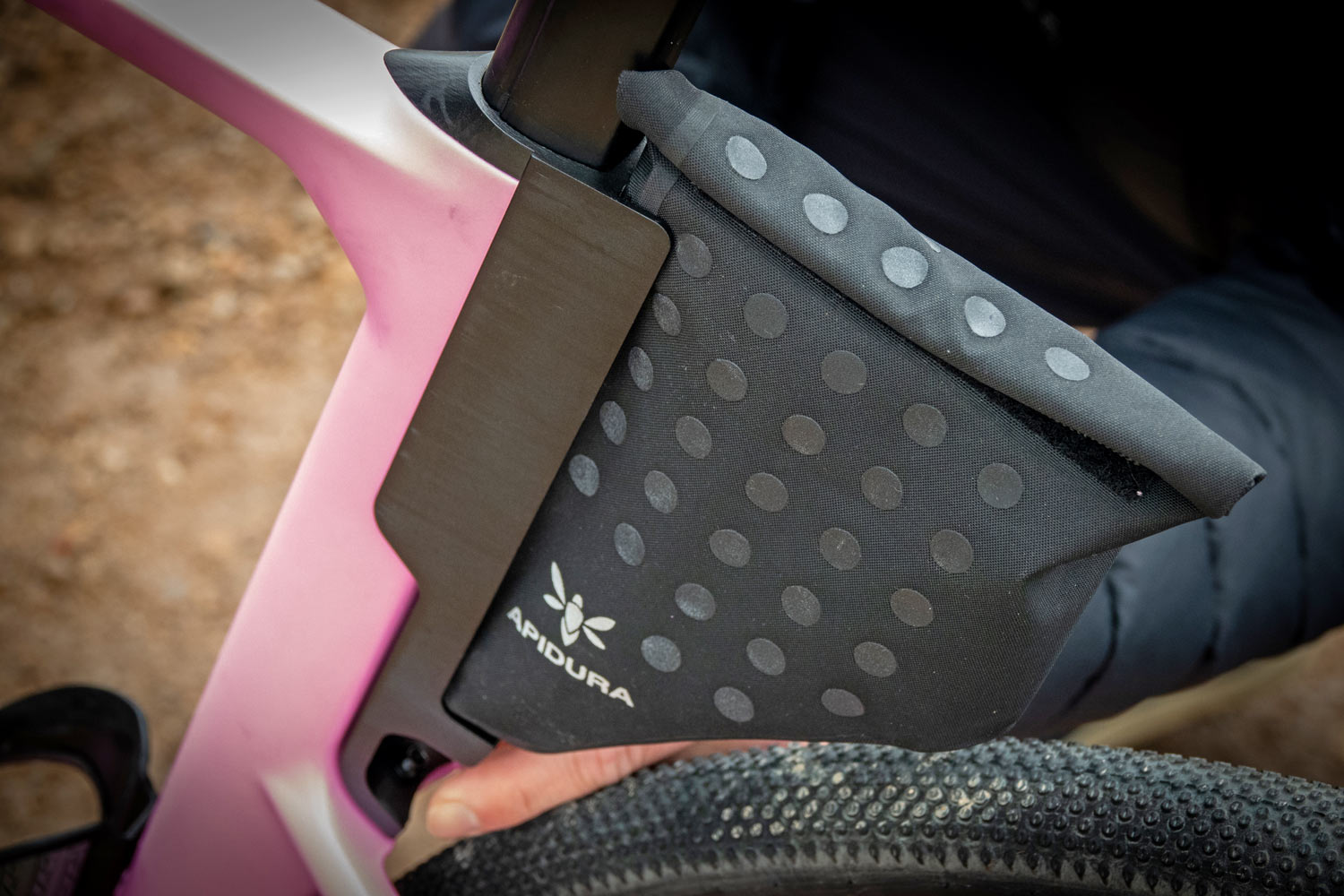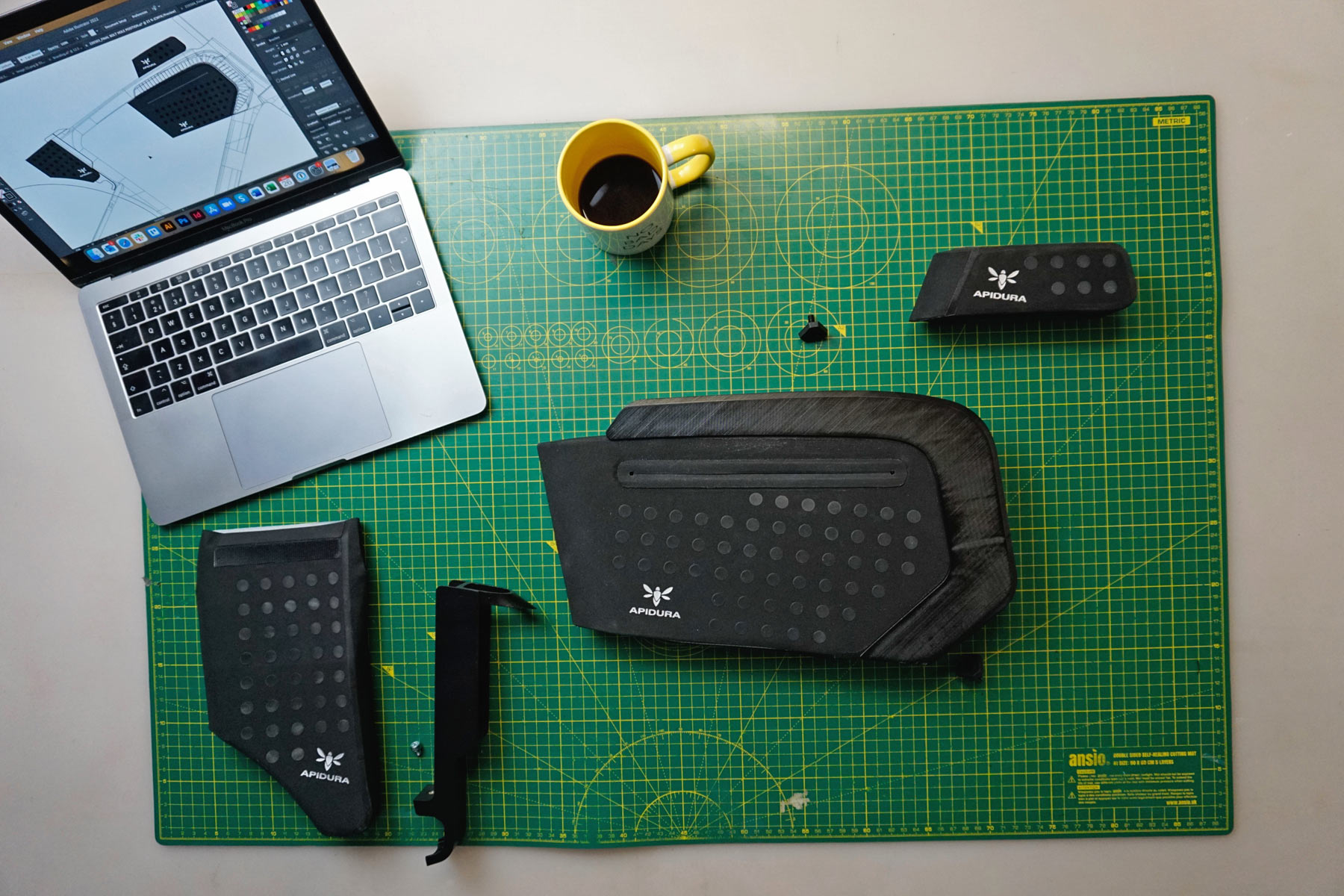The world’s fastest aerodynamic bikepacking bags, really? Apidura’s drag-optimized Aero Pack System is designed to make gravel bikes faster. It gives Fat Pigeon racer Nol van Loon’s Ridley Kanzo Fast a 16.66 watts savings at 40km/h compared to no bags at all, plus it helps carry all the nutrition & spares Nol will need to take on Unbound Gravel this weekend.
Apidura Aero Pack System aerodynamic gravel racing bags
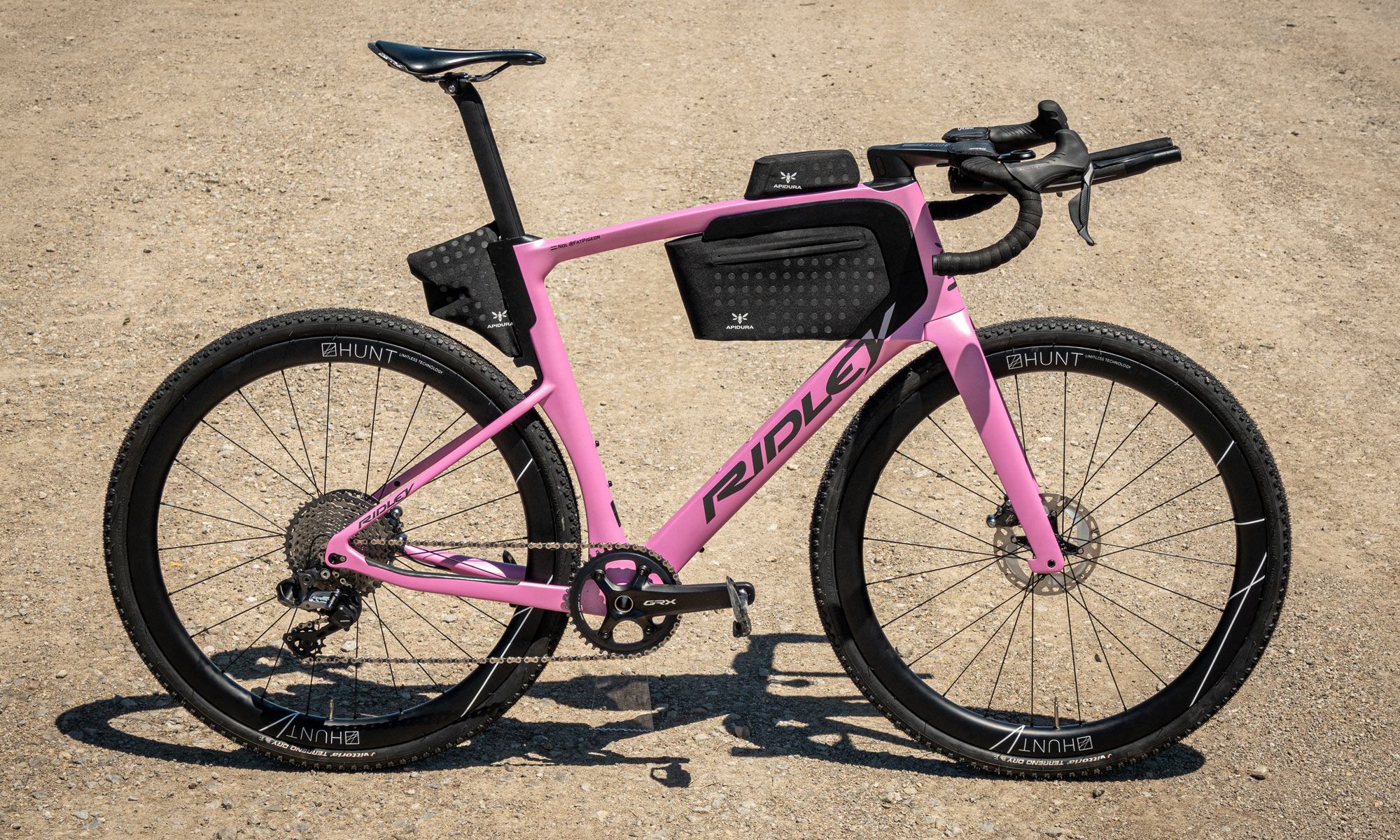
We’ll admit it, when we first had 3T telling us about aero gravel six years ago, we were a bit skeptical. Was it going fast, slower or going slow, but faster? In any case, the years since have shown gravel gainz from aero benefits at all speeds – from aero gravel wheels to the most aero gravel tires! We even had a nice aero gravel AASQ discussion last year.
Now, Apidura teamed up with Ridley bikes & Hunt wheels to create what they say is the “World’s Fastest Gravel Bike” to race Unbound Gravel this weekend.
Aero Bikepacking Bag Development
Apidura & Ridley had both been asking themselves how bags might not add drag to a gravel race bike, but in fact, make them faster. Baseline tests in the Bike Valley wind tunnel showed that a conventional bikepacking setup could be adding up to 17.5W of extra drag for racers looking to carry all-day race supplies (at a pretty conventional 40km/h testing speed). That’s more than the gains you get from deep aero wheels, a skinsuit, or an aero bike over conventional setups. Apidura says, even a regular toptube feed bag added an unnecessary 4W of drag in their wind tunnel testing, something many riders (including me) would have thought would have had a minimal impact.
Those numbers aren’t game-changing for multi-day bikepackers, but for fast-paced gravel racers it could be a winning edge. #marginalgains
So with a goal set to craft bags to make a gravel bike faster, Ridley identified areas on their “world’s fastest, most aero gravel” Kanzo Fast where bags could extend airfoil frame tube designs for smoother airflow over the bike. Then, the Apidura Innovation Lab set out on an iterative back-and-forth design development process – from drawing board to CFD to prototyping workshop to the wind tunnel, again – to create three small bags to make the Ridley faster.
Resulting Aero Gravel Gains
According to Apidura, “The Aero Pack System was wind tunnel tested with Nol van Loon of Fat Pigeon in the Bike Valley wind tunnel, finding a 16.66 watt saving at 40km/h – similar to moving from box section to deep section wheels or loose-fitting clothing to a skinsuit. Even more impressively, the savings translated to slow speed performance, with the packs yielding a 2.4 watt saving at Unbound average race speeds (32.04km/h).”
Almost as an aside, but the greatest revelation in our eyes… Apidura admits that another move Nol van Loon made saved him an additional 5.27W of averaged drag at this more realistic 32km/h slower speed. While the Aero Pack System bags are still at the prototype stage and would only fit the size large Ridley Kanzo Fast, moving from a long sleeve aero jersey with stuffed pockets to Apidura’s already available $189 / 157€ Racing Hydration Vest reduced drag twice as much as adding the bags did, at least at slower speeds. And the benefit increases at increased yaw angles (in crosswinds) where the aero packs are less helpful.
I guess, should I start wearing a racer’s backpack instead of a toptube bag?!
Tech Details
The Apidura Aero Pack System for this Ridley Kanzo Fast is comprised of three narrow aerodynamic bags – Aero Top Tube Pack, Aero Frame Pack & Aero Rear Pack. Each uses a modified heat-welded Hexalon fabric with a raised screen-printed dot design to smooth airflow – said to be 5.7W faster than the standard Hexalon from their Racing series… so hopefully those will all get a dotted update now, too!
The bags use 3D-printed plastic mounts that secure to the bike, but also make sure there are no air gaps between bag & bike to create turbulence.
The Aero Top Tube Pack is tiny at 0.4L and 37g light, designed to hide out of the wind behind steerer & stem with just enough space for gels or quick snacks. It does away with a zipper in favor of a flush closure with magnets inside. The small bag is direct mounted to the top tube bolts, and likely the first of this line that could be made available commercially. But it is complex – Apidura says it requires 8 tools to make vs. just 3 than their average pack – so it would likely be quite expensive.
The 2.5L Aero Frame Pack is much more custom, shaped to align with this specific bike’s tube shaping and using a 3D-printed mounting bracket that required Ridley to custom drill their carbon frame for direct mount attachment. The frame bag itself weighs just 170g, but its mounting hardware adds another 234g in this prototype. Like the toptube bag, the frame bag replaces zippers & flaps with a flush TPU cutout opening with a magnetic flap on the inside to make it water & dustproof, yet easy to get into.
The 0.8L Aero Rear Pack looks like something out of triathlon, with a similar goal of reducing air turbulence behind the seattube. The 36g bag attaches with a 74g 3D-printed bracket that replaces the seatpost clamp cover and extends to the fender bolt on the seatstay bridge. The Rear Pack has a simple roll-top closure, and internal stiffeners like the other bags to retain its aero-optimized shape no matter how you pack it.
(…but interestingly, not the most aero Schwalbe gravel tire.)
Apidura Aero Pack System – Availability, not yet…
Apidura Innovation Lab’s Ross Pugh describes the project as only really possible due to the tech-focused collaboration between their team & Ridley. “As a result of the data-driven design process, the packs are small and complex, creating new design and manufacturing challenges we had to overcome. We were able to design out some of the complexity by breaking down challenges and using advanced tools and techniques like 3D printing to smooth transitions and attach packs to shaped tubes.”
As of now the Apidura Aero Pack System is a “one-off concept currently” but like other projects out of their Innovation Lab, it’s likely to inform revisions & updates of current products, and is an indicator of the direction they are headed on other projects.
